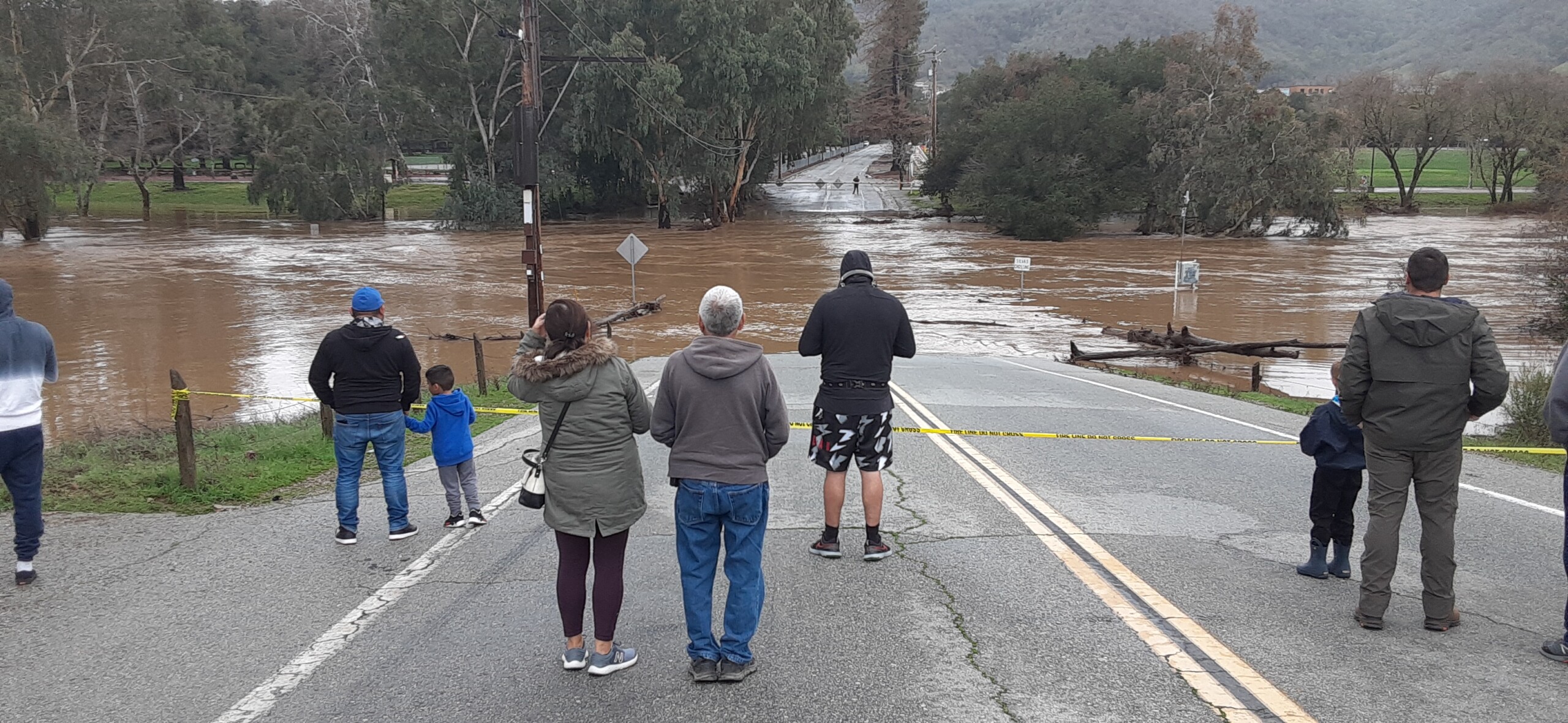Guest column by Rick Callender: Valley Water CEO reminds residents we’re still in a ‘moderate drought’
Climate change is expected to bring more frequent and more severe droughts and extreme rainstorms
![]()

Curious people check out the major flooding at Miller’s Crossing in Gilroy’s Christmas Hill Park. Torrential rains have battered the South Valley region since late December.
Photo by Marty Cheek
By Rick Callender

Rick Callender
The question I keep getting asked most often lately is, are we out of the drought? The answer is no. While the early-season rainfall benefited our water supply, it did not pull us out of the three-year drought. The U.S. Drought Monitor still classifies Santa Clara County as being in a moderate drought.
As we look to the future, climate change is expected to bring more frequent and more severe droughts and extreme rainstorms like the atmospheric rivers we saw at the start of this year.
 The Valley Water Board of Directors has taken actions to ensure we’re prepared for what’s to come, including adopting the Climate Change Action Plan in July 2021. The Climate Change Action Plan reviews Valley Water’s existing policies and efforts related to climate change and outlines long-term climate projections for Santa Clara County. We’re also investing in projects to diversify our water supply and improve flood protection in our communities to fight the challenges we face from our changing climate.
The Valley Water Board of Directors has taken actions to ensure we’re prepared for what’s to come, including adopting the Climate Change Action Plan in July 2021. The Climate Change Action Plan reviews Valley Water’s existing policies and efforts related to climate change and outlines long-term climate projections for Santa Clara County. We’re also investing in projects to diversify our water supply and improve flood protection in our communities to fight the challenges we face from our changing climate.
The powerful January storms brought much-needed rain and snow across California. While these atmospheric rivers boosted local reservoir levels and improved our water supply outlook, they also resulted in flooding in parts of Santa Clara County, reminding us of the importance of being flood ready.
Valley Water is investing in various flood protection projects throughout the county, including the Upper Llagas Flood Protection Project in Morgan Hill. Once completed, this project will protect the city’s urban area from a 100-year flood and reduce the frequency of flooding in the surrounding areas. Crews are scheduled to complete phase 2A of the project in 2024, which includes a 2,300-foot-long tunnel to divert high creek flows around the city’s downtown area.
Over half of our county’s water supply comes from outside the county. This imported supply relies on the Sierra Nevada snowmelt. The snowpack in the Sierra is well above average for this time of year, which has the potential to result in a more significant amount of imported water than we’ve received in recent years. However, nothing is guaranteed. We must wait until the end of winter before we know what our supply will look like for the rest of the year. A dry February and March can affect the progress made.
Valley Water is diversifying its water supply amid climate change by investing in locally reliable, sustainable, and efficient supplies such as recycled water. The South County Recycled Water Pipeline Project will expand recycled water distribution in Gilroy. The project is expected to be completed by the end of 2023.
 Our situation in Santa Clara County is more challenging because Anderson Dam, our largest surface reservoir, will be out of service for several years as we retrofit the dam to be earthquake safe. Completing this project will be a significant step in getting Anderson Dam back online as a more robust facility so it can protect public safety and again serve as Santa Clara County’s largest drinking water reservoir.
Our situation in Santa Clara County is more challenging because Anderson Dam, our largest surface reservoir, will be out of service for several years as we retrofit the dam to be earthquake safe. Completing this project will be a significant step in getting Anderson Dam back online as a more robust facility so it can protect public safety and again serve as Santa Clara County’s largest drinking water reservoir.
Due to the parade of winter storms, the water level at Anderson Reservoir currently sits above the mandate set by the Federal Energy Regulatory Committee. Valley Water is releasing water as quickly and safely as possible. Thankfully, the storms did not slow down the work at Anderson Reservoir as crews continue construction on a new outlet tunnel that will enable us to release water more quickly during future storm events.
Our region is in a unique position where we must prepare for both drought and flood. Valley Water invests in infrastructure and programs to ensure we have the right tools to handle future weather extremes. And even when the drought ends, we know another may be right around the corner. This is why everyone must continue to make water conservation a way of life.
Together, we can make a difference and keep our county prepared.
Rick Callender has worked at Valley Water since 1996 and was appointed chief executive officer in 2020.

